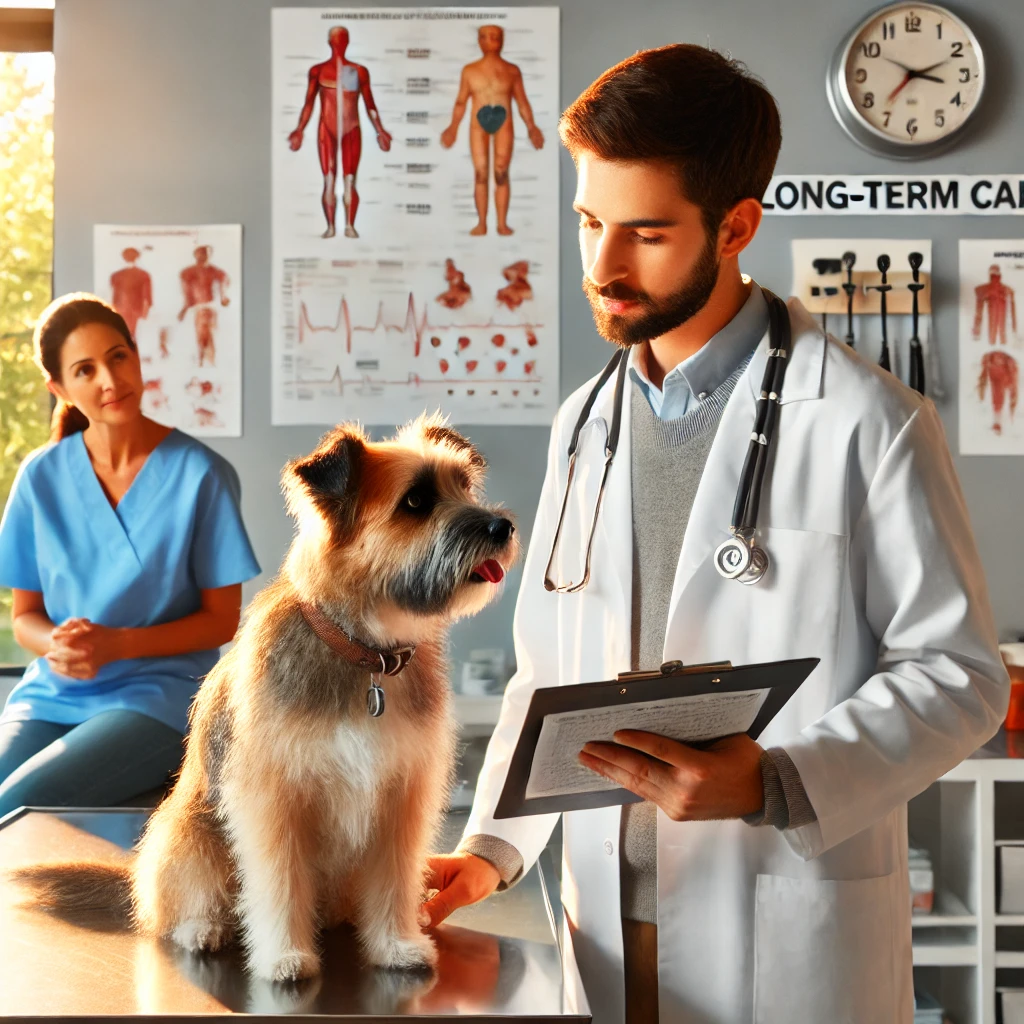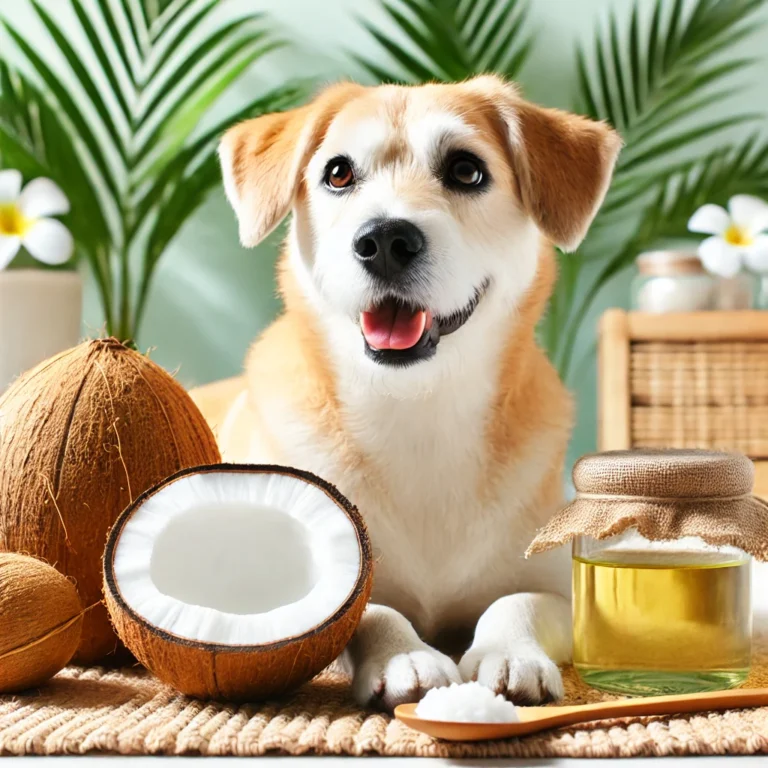
Can dogs eat garlic? Is it safe? How much is ok?
It’s a question that many pet owners ask, especially since garlic is often hailed as a superfood for humans.
But while it can boost our immune systems, it poses serious risks to our furry friends.
In this article, we’ll explore why experts say “no” to feeding garlic to dogs, what makes it so dangerous, and provide safe alternatives to keep your pup healthy.
The Risks of Garlic for Dogs
Garlic poses significant risks for dogs, even when consumed in small quantities.
It contains compounds that can lead to severe health issues, with potential long-term consequences.
Here is a detailed overview of the dangers garlic presents to your furry friend:
1. Toxic Compounds in Garlic
Garlic belongs to the Allium family, which also includes onions, leeks, and chives.
The primary toxic compound in garlic for dogs is thiosulfate, which can cause oxidative damage to red blood cells.
Unlike humans, dogs cannot process thiosulfate efficiently, which makes garlic particularly hazardous for them.
2. Hemolytic Anemia and Red Blood Cell Damage
When a dog consumes garlic, the thiosulfate damages red blood cells, leading to hemolytic anemia.
This condition occurs when red blood cells are destroyed faster than the body can produce them.
Without a sufficient number of healthy red blood cells, the dog’s body struggles to transport oxygen, which can result in serious health issues.
Symptoms of Hemolytic Anemia include:
- Weakness and Lethargy: The dog may appear tired or unwilling to engage in normal activities due to reduced oxygen supply to vital organs.
- Pale or Yellow Gums: Anemia can cause a noticeable change in gum color, often appearing pale or yellowish.
- Increased Heart Rate and Panting: As the body works harder to circulate oxygen, you may notice a rapid heartbeat or excessive panting.
- Discolored Urine: In severe cases, hemolysis can lead to dark or red-tinged urine.
3. Dosage Matters – But Even Small Amounts Can Be Harmful

Unlike humans, dogs are far more sensitive to garlic. Even a small amount can have toxic effects.
The toxic dose of garlic is estimated to be around 5 grams of raw garlic per kilogram of a dog’s body weight, but cumulative exposure over time (e.g., small doses given repeatedly) can also build up to dangerous levels.
Example Toxicity Thresholds:
- For a 10-pound dog (4.5 kg), consuming even a small clove of garlic could be toxic.
- Garlic powder and other processed forms retain toxicity and should be avoided entirely, as they can easily lead to overdoses due to their concentrated nature.
4. Cumulative and Delayed Effects
Garlic toxicity is unique because it often exhibits cumulative effects.
This means that while a single exposure may not immediately show symptoms, repeated small doses can gradually build up to cause toxicity.
This delayed reaction can make it difficult for pet owners to connect garlic consumption to the resulting symptoms.
5. Digestive Distress
In addition to the more serious risk of anemia, garlic can also irritate the dog’s digestive system, causing:
- Vomiting
- Diarrhea
- Abdominal pain and cramping
- Loss of appetite
These symptoms can lead to dehydration if left untreated, further exacerbating the risks.
6. Garlic vs. Other Allium Family Members
While garlic is often discussed, it is worth noting that all Allium family members, including onions, leeks, and chives, present similar risks to dogs.
Garlic is considered about 5 times more potent than onions, making it one of the most dangerous in the family for pets.
7. Misconceptions and Pet Health Trends
Despite garlic’s dangers, some pet owners believe in feeding small amounts as a natural flea repellant or immune booster.
However, this practice is strongly discouraged by veterinarians due to the risks of toxicity and lack of conclusive evidence supporting its benefits for dogs.
8. Long-Term Health Consequences
Repeated exposure or untreated garlic toxicity can lead to chronic health problems, including:
- Ongoing anemia and weakness: This can leave your dog more susceptible to illnesses.
- Organ damage: The prolonged lack of sufficient oxygen and stress on the body can impact major organs, such as the heart and kidneys.
9. The Role of Veterinary Experts
Veterinary organizations, including the ASPCA (American Society for the Prevention of Cruelty to Animals), have clearly stated that garlic is toxic to dogs.
This consensus underscores the importance of steering clear of garlic and seeking professional advice if accidental exposure occurs.
Understanding the risks of garlic for dogs emphasizes the importance of careful dietary choices for our pets.
By recognizing the potential dangers and symptoms, pet owners can keep their furry friends safe from harm.
Always consult with a veterinarian if you suspect garlic poisoning or need advice on a pet-friendly diet.
Why Some Pet Owners Are Confused

You may have heard of people using garlic as a natural flea repellent or an immune booster for dogs.
However, while this myth persists in some communities, veterinarians consistently advise against using garlic for dogs due to its toxicity.
Expert Opinion:
“Garlic toxicity is cumulative, meaning small amounts given over a period can build up to dangerous levels,” warns Dr. Jane Smith, a renowned veterinarian.
Always err on the side of caution.
What to Do Instead: Safe Alternatives to Garlic
If you’re seeking natural ways to boost your dog’s health or keep fleas at bay, consider these safe alternatives:
- Parsley: Rich in antioxidants, parsley can freshen your dog’s breath and promote health. Parsley Supplements for Dogs.
- Turmeric: A natural anti-inflammatory, turmeric can support your dog’s immune system. High-Quality Turmeric for Pets.
- Omega-3 Supplements: Promote a shiny coat and healthy skin with omega-3 fish oil. Fish Oil Supplements for Dogs.
- Coconut Oil: This superfood can improve digestion and help with skin health. Organic Coconut Oil for Dogs.
Immediate Steps if Your Dog Eats Garlic
If you suspect that your dog has consumed garlic, it’s crucial to act quickly and decisively to minimize any potential harm.
Garlic toxicity can lead to severe health issues, so taking immediate steps can be lifesaving for your furry friend.
Here’s what to do if you find yourself in this situation:
1. Assess the Situation and Remain Calm
- Determine the Amount and Form of Garlic Consumed: Try to estimate how much garlic your dog ate, whether it was raw, cooked, powdered, or in another form. Even small amounts can be toxic, but knowing the approximate amount will be helpful when speaking to a vet.
- Remain Calm: Panic can cloud judgment. Staying calm will help you focus on taking appropriate action quickly.
2. Call Your Veterinarian Immediately
- Provide Accurate Information: Call your vet as soon as possible and provide them with details about the incident. Be prepared to share the amount of garlic your dog consumed, the time of ingestion, and any symptoms you’ve observed.
- Follow Their Instructions: Your vet may give you specific advice on what to do next, depending on the severity of the situation. This may include bringing your dog in for an examination right away.
3. Contact a Pet Poison Control Center (If a Vet Isn’t Immediately Available)

- Pet Poison Helpline: In the absence of immediate access to a veterinarian, reach out to a pet poison control center, such as the ASPCA Animal Poison Control Center or the Pet Poison Helpline. They can provide you with urgent advice tailored to the situation.
- Note the Details: Make a note of any case numbers or advice given so you can relay this information to your vet when you speak with them.
4. Do Not Induce Vomiting Unless Directed by a Professional
- Inducing Vomiting: It may be tempting to make your dog vomit to expel the garlic. However, only induce vomiting if specifically instructed to do so by a veterinarian or poison control professional. Inducing vomiting can be dangerous if done incorrectly or in inappropriate circumstances.
5. Monitor Your Dog Closely for Symptoms of Garlic Poisoning
- Symptoms to Watch For: Keep a close eye on your dog and watch for any signs of garlic toxicity, such as:
- Vomiting
- Diarrhea
- Lethargy or Weakness
- Pale Gums
- Increased Heart Rate and Breathing Difficulties
- Loss of Appetite
- Red or Dark Urine
- Record Observations: Note the timing and severity of any symptoms to share with your vet.
6. Offer Fresh Water to Keep Your Dog Hydrated
- Hydration is Key: Encourage your dog to drink fresh water to help flush toxins from their system. However, do not force water if your dog is unwilling to drink.
7. Consider Activated Charcoal (If Recommended by a Professional)
- Activated Charcoal: Your vet may suggest administering activated charcoal to absorb toxins in the digestive system and reduce further absorption into the bloodstream. This step should only be taken under veterinary guidance. activated charcoal for pets.
- Administration Tips: If advised to give activated charcoal, follow the dosage instructions carefully to ensure effectiveness and avoid complications.
8. Prepare for Possible Hospitalization or Treatment
- Veterinary Treatments: Depending on the severity of the garlic ingestion, your dog may need to be hospitalized for monitoring and treatment. This may include:
- IV Fluids: To keep your dog hydrated and support their organs.
- Oxygen Therapy: To address anemia and ensure adequate oxygenation of tissues.
- Blood Tests: Your vet may perform blood tests to assess red blood cell levels and detect any signs of hemolytic anemia.
- Medications: Treatment may involve medications to protect the digestive system, prevent further red blood cell damage, or manage symptoms.
9. Follow Up With Your Veterinarian
- Continued Monitoring: Even if your dog appears to recover quickly, it’s important to follow up with your veterinarian to monitor for delayed or cumulative effects of garlic toxicity.
- Dietary Review: Your vet may also recommend reviewing your dog’s diet and household habits to prevent future accidental ingestion.
10. Take Preventative Measures Going Forward
- Pet-Proof Your Kitchen: Store garlic and garlic-containing foods out of reach of your dog. Be cautious when feeding table scraps or sharing meals.
- Read Labels Carefully: Be mindful of prepared foods, treats, and supplements that may contain garlic powder or garlic extract.
Common Foods and Treats That May Contain Garlic

Many pet owners unknowingly expose their dogs to garlic through various human foods and treats.
This section will help readers identify potential risks.
Hidden Sources of Garlic:
- Commercial Dog Treats: Some products may contain garlic powder as a flavoring agent.
- Human Foods and Leftovers: Foods like garlic bread, sauces, soups, and casseroles may contain dangerous levels of garlic.
- Seasonings and Marinades: Many marinades, rubs, and spice blends include garlic or garlic powder.
Tips for Avoidance:
- Carefully read ingredient labels before sharing any human food with your dog.
- Opt for dog treats that clearly state they do not contain garlic.
Myths vs. Facts: Garlic and Dogs
Garlic myths persist due to anecdotal claims and cultural beliefs.
This section aims to dispel misinformation with factual, expert-backed information.
Common Myths:
- “Garlic is a natural flea repellent.” While garlic has been used as a flea repellent, its risks far outweigh any potential benefits for dogs.
- “Small amounts of garlic are okay.” Even small amounts can accumulate over time and lead to toxicity.
- “Dogs can eat garlic like wolves in the wild.” This myth fails to consider that domesticated dogs have different dietary needs and sensitivities.
Expert-Backed Facts: Provide quotes and data from veterinarians explaining why garlic is harmful.
Safe Herbs and Foods to Enhance Your Dog’s Diet
If you’re looking for ways to boost your dog’s immune system, there are numerous safe alternatives to garlic.
Healthy Alternatives to Garlic:
- Basil: Contains antioxidants and has anti-inflammatory properties. Dog-Friendly Basil Treats.
- Rosemary: Supports digestion and offers antioxidant benefits. Rosemary Supplements Here.
- Blueberries: Packed with vitamins and safe for dogs to enjoy as a snack.
- Pumpkin: A great source of fiber and nutrients.
Easy Recipe Ideas: Provide recipes for dog-safe homemade treats that incorporate healthy herbs.
Long-Term Care and Monitoring for Garlic Exposure

If your dog has experienced garlic toxicity, it’s important to take steps for their long-term health and recovery.
Post-Toxicity Care Tips:
- Regular Blood Tests: Schedule follow-up blood tests to monitor red blood cell levels and overall health.
- Specialized Diets: Work with your vet to create a nutrition plan that supports recovery.
- Monitor for Delayed Symptoms: Be vigilant about any changes in behavior, energy levels, or physical symptoms.
Pet Insurance Considerations: Consider pet insurance for unexpected health emergencies.
Emergency Contacts (Keep These Handy)
- Local Vet’s Phone Number: [Insert your vet’s phone number here.]
- ASPCA Animal Poison Control Center: 1-888-426-4435 (USA)
- Pet Poison Helpline: 1-855-764-7661 (USA and Canada)
By acting swiftly and following these steps, you can greatly improve the chances of your dog’s recovery if they accidentally consume garlic.
When in doubt, always consult a veterinarian to ensure your pet’s safety and well-being.
Expert Opinions and Resources
Experts overwhelmingly agree that garlic should not be part of a dog’s diet.
Dr. Emily Johnson, a canine nutritionist, notes, “While garlic may have health benefits for humans, the same is not true for dogs due to their unique metabolism.”
To dive deeper, here are some helpful resources:
- ASPCA’s Animal Poison Control Center – Your go-to resource for emergency toxin information.
- PetMD – Offers detailed articles on dog nutrition and garlic toxicity.
Conclusion
Can dogs eat garlic?
The short answer is a resounding no. The risks far outweigh any potential benefits.
Instead, focus on safe, healthy alternatives to keep your dog’s immune system strong and their coat shiny.
Remember, always consult your vet before introducing any new foods or supplements into your dog’s diet.
Have questions or stories to share about garlic and your pet?
Drop a comment below or share this article to help other dog owners stay informed!
FAQs About Garlic and Other Foods for Dogs

A dedicated FAQ section addresses common questions and concerns about garlic and other potentially toxic foods.
Sample FAQs:
- Q: Can dogs eat garlic powder or garlic salt?
A: No. Both are concentrated forms of garlic and pose the same risks as raw or cooked garlic. - Q: Is cooked garlic less toxic to dogs?
A: No. Cooking does not remove the compounds that make garlic toxic to dogs. - Q: Can garlic be used in any homemade dog remedies?
A: No. Due to its toxicity, garlic should never be used in homemade remedies for dogs. - Q: Are onions as dangerous as garlic for dogs?
A: Yes, onions and other members of the Allium family are also toxic to dogs and should be avoided. - Q: What should I do if I suspect garlic poisoning but my dog seems fine?
A: Contact your veterinarian immediately. Symptoms may be delayed, so early intervention is key.
Can Dogs Eat Spinach Raw or Cooked? Find Out What’s Best
The Best Dog Play Pens for Indoor and Outdoor Fun
As an Amazon Associate, I earn from qualifying purchases.



